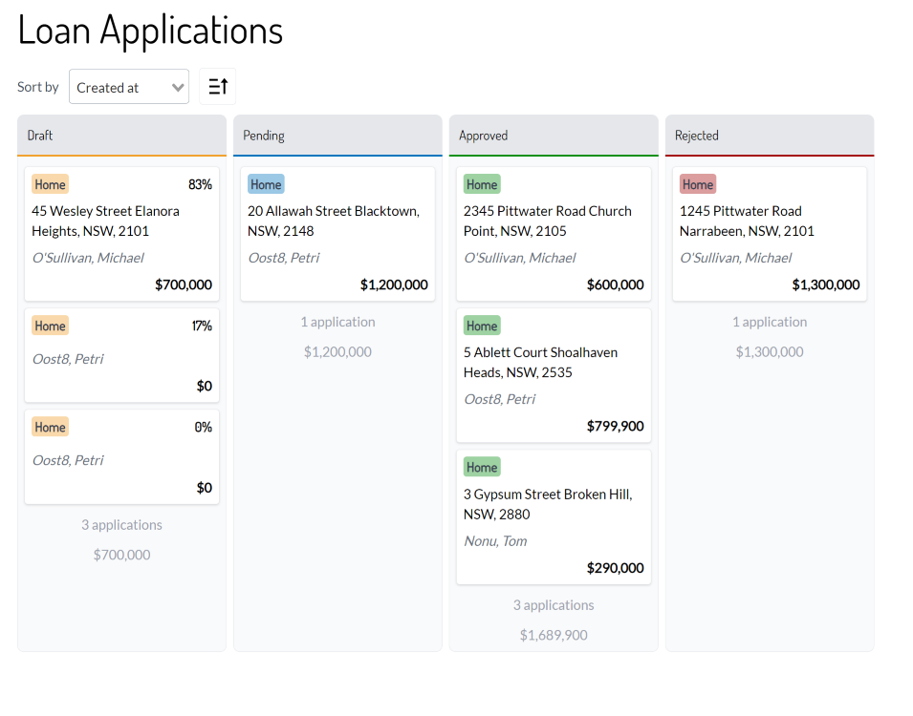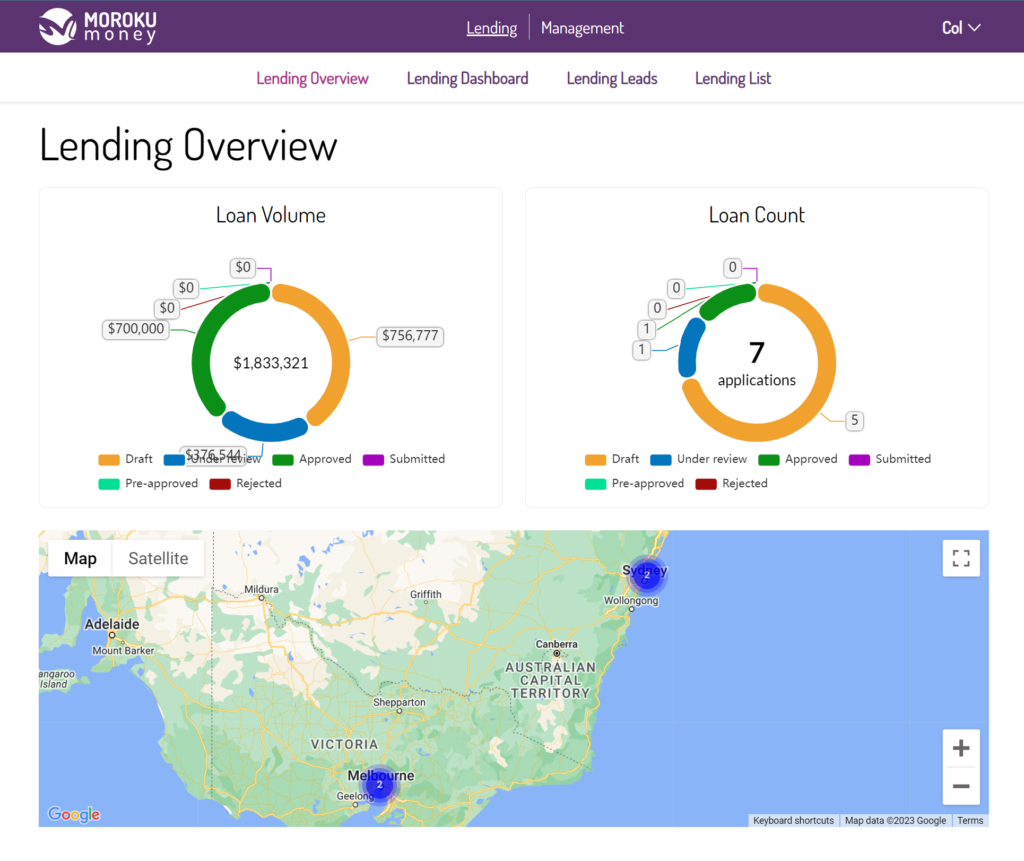Agile is a project management methodology that originated in the software development world, but has since been adopted by many other industries, including sales. Agile helps teams work more quickly, minimize waste, and deliver better results by focusing on smaller, more immediate goals, addressing feedback and issues in real time, and adapting to evolving needs.
Moroku has embedded agile sales management into its lending platform for banks and credit unions to help drive greater sales effectivenss through the sales funnel. This means that as well as an improved customer experience, you get a sales performance management system that, when combined with the contemporary customer experience, gives you the uplift you seek.
What is Agile Sales Management?
Agile sales management is the application of agile principles and practices to the sales process. Agile uses sprints and kanban boards to create speed and transparency.
Sprints break down the sales cycle into smaller, manageable chunks called sprints, which typically last one or two weeks. During each sprint, the sales team works on a specific set of tasks or objectives, such as generating leads, qualifying prospects, closing deals, or upselling customers.
Kanban boards, break the sales funnel into deals and stages. These are then placed on a board, that everyone can see and begin applying analysis over to unlock deals and manage velocity of those deals, through the stages. Below you can see the sales stages as implemented in Moroku Lending
The sales team meets daily for a short meeting, normally no more than 15 minutes, called a stand-up, where they share their progress, challenges, and plans for the day ahead Any areas for help or solutioning are identified, taken off line for a separate session, and deliberately not solved in the meeting. At the end of each sprint, usually every fortnight, the team sharess their results in a showcase to the business, gathers feedback from customers and stakeholders, and identifies priorities and areas for improvement. The team then plans the next sprint based on the feedback and the changing market conditions.

Why Use Agile Sales Management?
Agile sales management offers several benefits for sales teams, including:
- Increased flexibility and responsiveness. Agile sales teams can quickly adjust their strategies and tactics based on real-time data and customer feedback, rather than following a rigid and outdated plan. This allows them to respond to changing customer needs, preferences, and expectations, as well as to seize new opportunities and overcome challenges in the market.
- Improved collaboration and communication. Agile sales teams work together as a cross-functional unit, rather than in silos. They share information, ideas, and best practices, and support each other in achieving their goals. They also communicate regularly with customers and stakeholders, and involve them in the sales process. This fosters trust, transparency, and alignment among all parties involved.
- Enhanced performance and productivity. Agile sales teams focus on delivering value to customers, rather than on activities or outputs. They prioritize the most important and impactful tasks, unblocking customers and eliminate waste and inefficiencies. They also measure and track their progress and results, and use data to make informed decisions and improvements. This leads to higher quality, faster delivery, and better customer satisfaction.

How to Implement Agile Sales Management?
To implement agile sales management in your sales team, you need to follow these steps:
- Define your vision and goals. You need to have a clear and compelling vision of what you want to achieve as a sales team, and how agile can help you get there. You require the discipline and courage to set specific and measurable goals for each sprint, such as revenue, conversion rate, customer retention, or customer satisfaction. These goals should be aligned with your overall business objectives and customer value proposition.
- Create your backlog and plan your sprints. You need to create a list of all the tasks or activities that you need to do to achieve your goals, and prioritize them based on their value, urgency, and feasibility. This list includes deals tahtthe system should generate automatically but also supporting activities that are required to help achieve the goals. This list is called the backlog, and it serves as the source of work for your sprints. You then need to plan your sprints by selecting the most important and relevant tasks from the backlog, and assigning them to your team members. You should also estimate the time and resources required for each task, and set a deadline for the sprint completion.
- Execute your sprints and hold your stand-ups. You need to execute your sprints by working on the tasks that you have planned, and delivering the expected results. You should also hold your stand-ups every day, where you report your progress, challenges, and plans to your team members, and ask for help or feedback if needed.
- Review your sprints and gather feedback. You need to review your sprints at the end of each cycle, and evaluate your performance and outcomes. You should also gather feedback from your customers and stakeholders, and use it to assess your customer satisfaction and value delivery. You should also identify the strengths and weaknesses of your sales process, and the lessons learned and best practices that you can apply to the next sprint.
- Plan your next sprints and iterate. You need to plan your next sprints based on the feedback and the data that you have collected, and the changes that you have made. You should also iterate your sales process by making continuous improvements and adjustments, and testing new ideas and experiments. You should also celebrate your achievements and recognize your team members for their contributions.
Conclusion
Agile sales management is a powerful and proven way to boost your sales performance and productivity, and to deliver more value and satisfaction to your customers. By adopting agile principles and practices, you can make your sales team more flexible, collaborative, and data-driven, and achieve your sales goals faster and better.
You can implement agile sales management by deploying Moroku Lending. Moroku Lending captures leads from customers and places them into a Kanban board for sales team to operate the agile rituals of standups and showcases, providing the analytics by which to review performance and sales velocity.
We hope this article helps you understand and implement agile sales management in your sales team. If you have any questions or feedback, please feel free to contact us below.